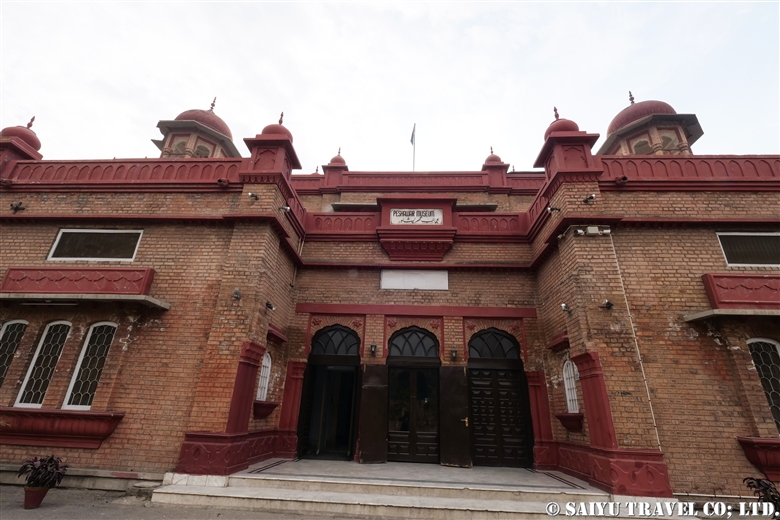
The Peshawar Museum has the best collection of Gandhara historical artifacts. Most of the exhibits are about Gandhara art and there are so many Buddhist biographical panels and decorations, there isn’t enough time to look through them all.
Like all other museums, this museum dates back to the days of the British Indian Empire and was built back in 1907 with the “Victoria Hall” to commemorate Queen Victoria.
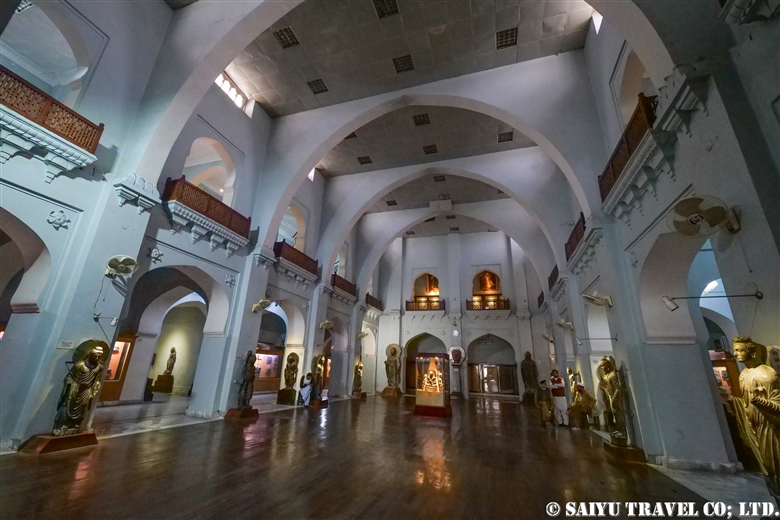
This is the main hall of the Peshawar Museum. The Gandhara arts are exhibited in the gallery from the hall to the left of the entrance.
This exhibit featured unearthed sculptures from archaeological sites centered around Swat, like items found on the walls of the monasteries and from the base of stupas.
They express the stories of the Buddha (also called Jataka tales) and various scenes from the Buddha’s life. There are many exhibits and even if it is in the same scene, they have many different styles, so take the time to explore the museum, at your own pace.
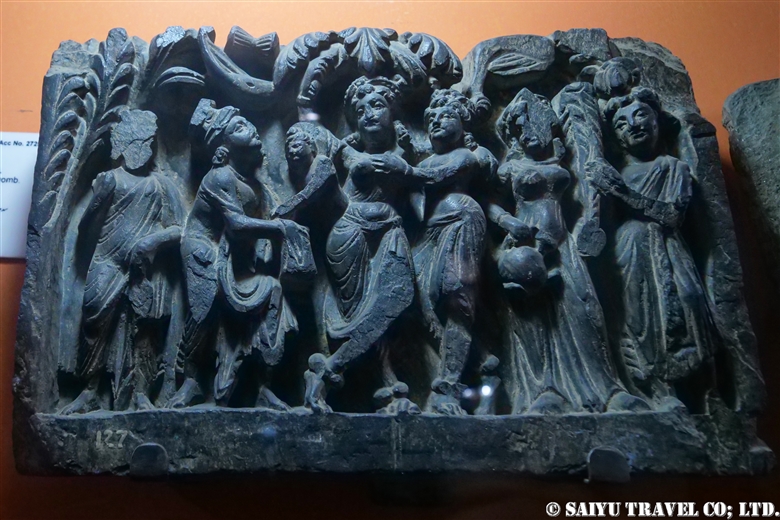
This is “The Birth” panel. Maya (the Buddha’s mother) is in the center, with her right hand extended up and grabbing the tree, the prince is protruding from her upper body on the right side. The God Indra receives him and behind him is the Brahman God blessing him.
The panel of “The Life of the Buddha” is drawn with various motifs from “birth” to “nirvana.”
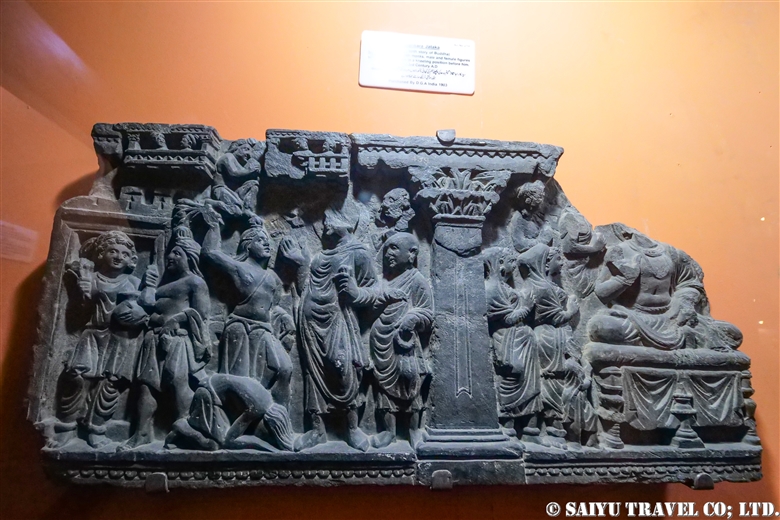
Among the Jataka tales, Gandhara had a very popular story with the Dīpankara Buddha (Buddha of the past).
“One day, when the godly young man, Sumedha (also known as Megha, is actually Shakyamuni in a previous life) heard that the Buddha was coming to town, he was eager to offer flowers to the Buddha, but when he tried to buy flowers, the King had already bought all of them, so he couldn’t purchase any. He met a girl passing by carrying water and flowers, and he convinced her to sell her 5 lotus flowers. When the Buddha appeared, Sumedha threw the flowers just like everyone else, but his 5 flowers did not fall to the ground, but instead floated in the air and decorated the Buddha’s head as a halo (numbus). Seeing some mud on the ground in front of the Buddha, Sumedha then prostrated his body and threw out his long hair to cover it, so that the feet of the Buddha would not get dirty in the mud. The Buddha then blessed Sumedha saying ‘You will be enlightened in the future and become a Buddha.’
In the panel on the photo, there is the young man, Sumedha, who throws his hair, left of center of the panel.
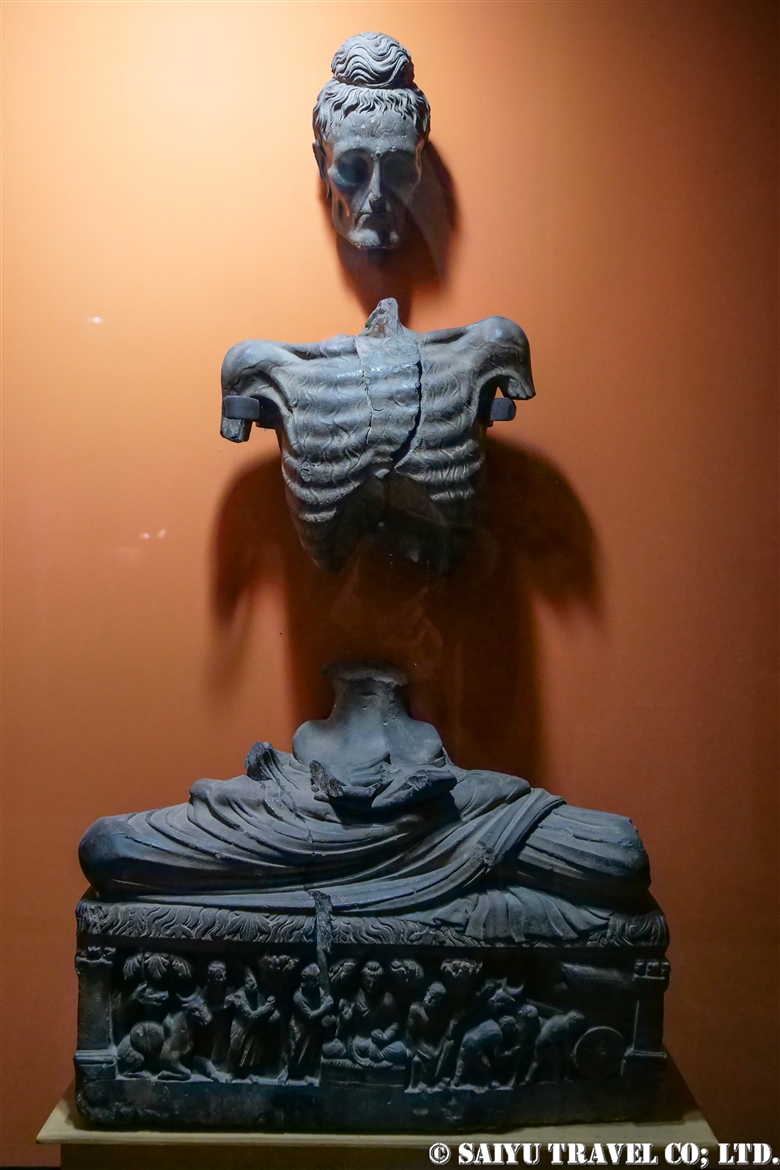
One of the most important exhibits of this museum is “The Fasting Siddhartha” statue. Compared to the one in Lahore’s museum, there are many missing parts, but the blood vessels and supporting bones are very realistic.
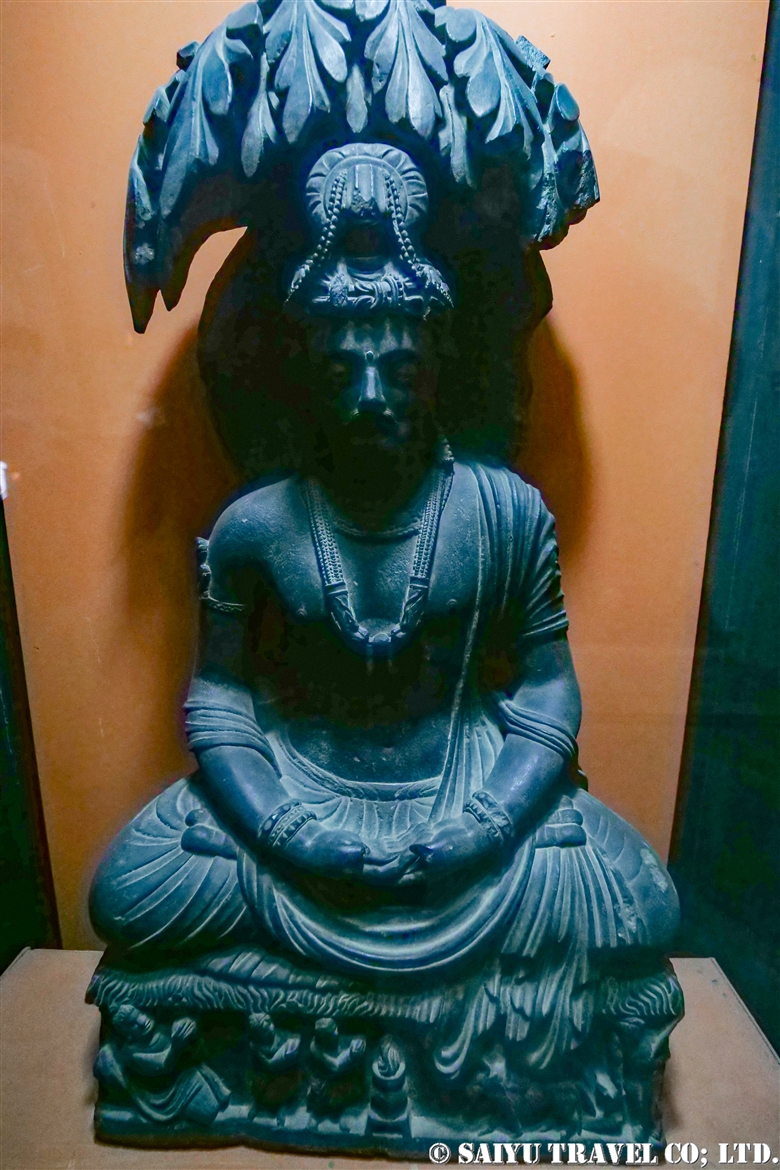
A statue of Siddhartha meditating under the tree (his first meditation).
While the prince watched a field under a tree, there were insects which emerged from the soil after it was dug up with a hoe; when a small bird eats the bug; then a large eagle in turn eats the bird. It was an event that made him feel the transience of life and later led to his enlightenment.
The pedestal is engraved with the signs of the first spring cultivation. It is a little difficult to see in the photo, but on the right side of the pedestal there are two cows plowing the field.
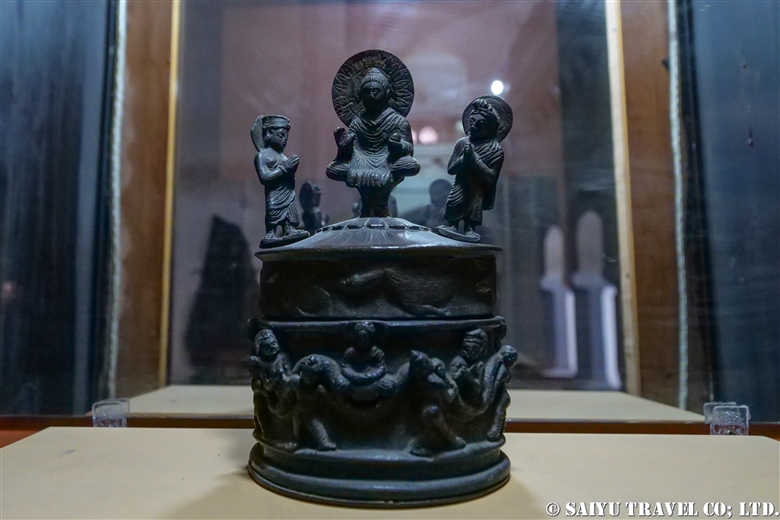
And another famous object in the Peshawar Museum, this is the casket for King Kanishka from Shah-ji-ki Dheri excavations.
The winter city of Gandhara during the Kushan period was Purushapura, now part of Peshawar. The only archaeological site found here is Shah-ji-ki Dheri, known as the Kanishka stupa. The casket was found from this site, and it was written in the Kharosthi script that it was “…this perfume box is the meritorious gift of Maharaja Kanishka in the city of Kanishkapura.” It was a discovery that proved that the legendary stupa actually existed.
So, is this the real thing? Based on the photos from the internet, it’s probably a replica.
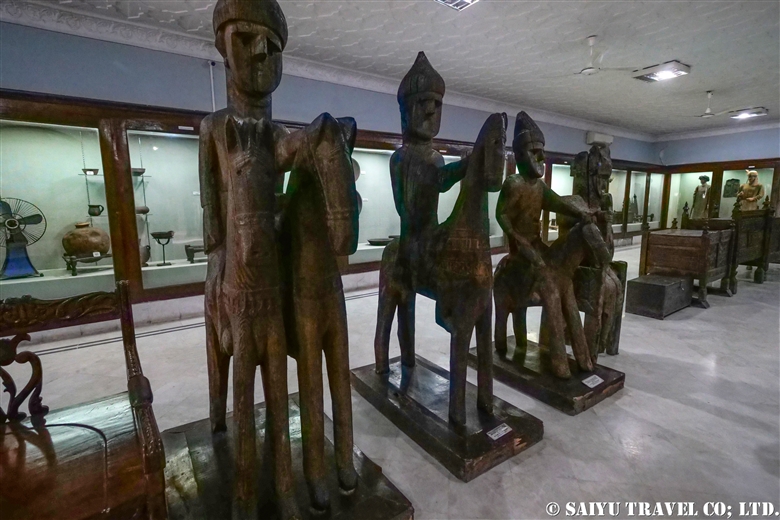
The Peshawar Museum has two floors. The 2nd story is an exhibition of the various ethnic groups of Khyber Pakhtunkhwa. In particular I found the Kalash wooden statues “Gandao” (made to commemorate the memory of dead men, their contributions, and achievements) is a precious collection because well preserved ones can no longer be found in the Kalash Valley.
Photo & text: Mariko SAWADA
Location: Peshawar Museum, Peshawar, Khyber Pakhtunkhwa
Tag : Purushapura , Indus Caravan , Peshawar Museum , Saiyu Travel , Gandhara tour , The Fasting Buddha Peshawar Museum , Saiyu Travel Pakistan , pakistan buddhist ruins , Fasting Siddhartha , pakistan buddhist tour , Unesco World Heritage Pakistan , Dharmarajika Stupa , Pakistan Travel company , Fasting Buddha , The Kanishka Casket , Pakistan Photography Tour , Kanishka casket , Pakistan Blog , Peshawar , Kanishka stupa , Pakistan Travel Blog , Pakistan Heritage Tour , Shah-ji-ki Dheri







